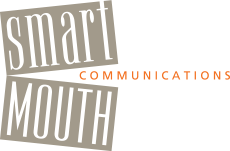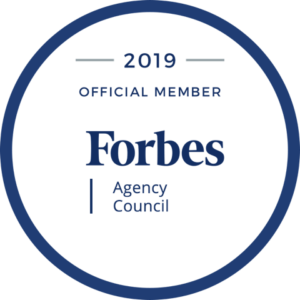SmartMouth Talks!
“Dignified Comportment”
“Dignified comportment” – classy, respectful, present, unflappable.
In the months leading up to Derek Jeter‘s much-anticipated retirement on Sunday, nearly all media coverage has mentioned, if not focused on, Jeter’s clean record of behavior. He’s never made trouble, nor has he ever made any outrageous or controversial comments. In 20 years. In New York.
In The New York Times Sports Sunday this past weekend, Dan Barry and Ken Schwencke wrote a piece entitled “With His Words and Deeds, Jeter Never Entered Foul Territory.” In it, they wrote, “Jeter’s ability to maintain a posture of sustained inscrutability – or, if you must, dignified comportment – has extended especially to the spoken word.”
“In a major league career that dates to the Clinton administration’s first term … inquiring reporters have gathered around Jeter in the clubhouse thousands of times. He has maintained eye contact, answered nearly every question posed to him – and said nothing. This is not a complaint, but rather an expression of awe; of admiration, even.”
Even – or especially – in difficult times, when you might be facing criticism or uncomfortable questioning or dealing with bad news, think of Jeter’s example. Dignified comportment. Turns out, it’s career-defining.
Dig Deep
Get personal, be vulnerable, share.
Tell a personal story that reveals who you are – and not just the glowing parts.
Open up. Be real. Dig deep.
You will be rewarded with your audience’s attention and admiration.
The Eyes Have It!
“Vision trumps all other senses.”
Those are the words of Dr. John Medina, a renowned molecular biologist. I have become fascinated by his book, “Brain Rules: 12 Principles for Surviving and Thriving at Work, Home, and School.”
According to Medina’s work, we remember pictures. He claims that if we hear a piece of information without a picture as visual support, then three days later we’ll remember only 10% of it. However, if we hear a piece of information with a picture to support it, then three days later we’ll remember 65%.
Medina also asserts that we remember pictures much better than we remember text, because our brains see words as lots of little pictures, making the reading part less efficient than simply looking at a picture.
The implication for business presentations? Images beat words. Those dense text slides you’re using or seeing might not be providing the “visual support” benefit you were hoping they would have.
Try images – pictures, simple graphics, or even one-word slides. It takes some forethought and advance planning, but your audience will better remember what you were trying to impart to them. And if you spare them the multi-bullet-pointed slides that have become ubiquitous, they are likely thank you!
Slow it Down!
Slow it down, folks.
Take time to look at your audience, really see them (and gauge their engagement).
Take time to ask questions of your audience (and build rapport, gain understanding).
Talk to them, not at them.
Breathe, pause, relax. Seriously, breathe. Inhale. Exhale.
Be careful not to be so anxious to motor through your presentation and “just get through it” that you forget to connect with your audience and be yourself.
Just slow it down a little.
Attention & Retention Made Simple
I have two simple tips for you that are not brain surgery, but they do come from a doctor whose research focuses on the brain.
For my upcoming book, I have been digging into attention spans – how they work and how long they last. After all, if we’re talking to people, we want to make sure we’re grabbing and holding onto their attention. One of the more interesting books I took a look at was “Brain Rules” by Dr. John Medina. Medina distills his research down to 12 “brain rules” and two of them caught my eye.
The first was that people don’t pay attention to boring things. We pay attention to things like emotions and threats. Hmmm, that’s probably why storytelling is so effective and also why being able to identify your audience’s “pain” works well to grab their attention!
The second was that people need repetition to remember. People need to be exposed and re-exposed to material you want them to retain. This is not at all surprising to those of us who can remember almost every advertising jingle from our childhood!
So, you see? These tips are not brain surgery. You know both of these little fun facts. But the question for you to ask yourself is, do you consider these facts when you speak and present? Do you check yourself for how boring/interesting your material is and ask yourself what you can do and how you can package it, to make it more compelling? Do you build in some repetition of the important tidbits you need your audience to remember?
I’ll leave the rest to you, but I just wanted to share some fun summertime food for thought!
Smile
Smile.
Yep. That’s the tip of the month. Smile.
Smiling changes your delivery. It will put you at ease, and your audience will have more confidence in you – as well as a more favorable impression. Of all the body language tips I could give you, this one is quite possibly the best one. And the easiest.
So yep, just remember to smile. That’s all.
To Wing or Not to Wing
Why not wing it?
You know your stuff, right? You don’t really need to prepare, you’ll be fine. Or not.
Winging it is common, but it’s risky. Unfortunately, most of us have had an experience or two when we have winged it and won. I say ‘unfortunately’ because those little successes give us false confidence to take the risk of winging it again and again.
Some of the risks of winging it are:
- talking for way too long;
- delivering a series of disjointed thoughts that are hard to follow;
- never getting to your point or being off point;
- leaving your audience with the impression that you didn’t care enough to prepare.
Some really quick and easy ways to prepare are:
- ask yourself what you want your audience to take away, and then focus only on that;
- get in touch with what your audience really and truly cares about and address it;
- think of a relevant story or anecdote that supports the point or purpose for your talk;
- identify a call to action, if you have one, and use that as your foundation.
These quick and easy tips are the kind of preparation you can do in your head just minutes before you get up to speak, and they are sure to help minimize your risk!
Consider Yogi Berra’s advice:
“You got to be careful if you don’t know where you’re going, because you might not get there.”
Screen Shot
I stand corrected. And I now stand with the screen to my left when I present using slides as a visual.
Because audiences in western cultures read from left to right, it’s more natural for their eye movement. So, if you place yourself with the screen to your left as you’re facing the audience, all eyes can roll smoothly from you to the screen each time you bring up a new slide.
Easy enough, now just be sure to keep your body and eyes pointed toward your audience!
Stay in your lane
For some reason, even the smartest, most seasoned professionals lose all sense of perspective and proportion – e.g. time, place, purpose – when they have to approach a microphone. I have seen the mere invitation to make a statement, or speak at a press conference, or make welcoming remarks escalate into nothing short of the need to draft a 45-minute inaugural address.
For example, I recently had a client who was asked to make brief pre-dinner welcoming remarks to a visiting industry group. Knowing full well there would be other presentations during dinner that evening, this client and his handlers still came up with a full-blown speech that not only welcomed everyone, but addressed the biggest challenges facing that particular industry. It was meant to be meaningful for the audience, but it was long, philosophical, and dissertation-like. Great stuff for a keynote speech, but way overboard for “brief welcoming remarks.” I offered to help, and we cut his remarks back to be much shorter and somewhat more entertaining, although still relevant.
Another example was a client who was in the early stages of a multi-year project to build a new, much-anticipated state-of-the-art facility. At the point in the design process when the client was preparing to announce the selection of the firm that would create the look and feel of just the interior space, I caught wind that the CEO was planning to say this: “Today is the culmination of 10 years worth of dreaming and planning and hard work by many. We are so proud and thrilled . . . ”
Huh? Really? To see if I could awaken a sense of proportion, I gently asked, “um, well, so, if you say that now, what will you say at the ground-breaking when construction begins, or at the ribbon-cutting for the grand opening? Don’t you want to save the 10-year dream-come-true theme for one of those occasions?”
Here are some tips to help you keep it all in perspective and maintain a sense of proportion:
1. Think about the audience and the occasion. Why is the audience in the room and what do they care about, want, and/or expect? How patient and attentive are they likely to be? (In fact, how patient and attentive is any audience?)
2. Know your role for the occasion. Are you the only speaker or one of many speakers? What specifically were you asked to do?
3. Know your “job” for the occasion. Are you introducing, informing, inspiring, entertaining? What verb describes your primary communications task for the occasion?
4. Finally, if you are asked to introduce a speaker, confer with the speaker about how they like to be introduced or what they prefer you say – or not say – about their topic. Find out what will suit the speaker’s personal preference and topic, don’t simply ask for and then read a bio because “that’s what people do” and don’t dive into someone else’s topic in your intro!
You’ll be just fine if you keep the audience in mind, stick to your assigned role, and do your “job” – nothing more, nothing less! Stay in your lane.
Change the Dialogue
Do you get nervous when you have to speak in front of a group?
Instead of allowing yourself to stay in that dialogue with yourself about how nervous you are, force yourself to turn your attention to and then dialogue with your audience.
Literally dialogue. As people are entering the room or taking their seats, and as you are gearing up and feeling those butterflies, start looking at and talking to THEM. Look into their faces, talk to them as if you are getting to know them.
Stop dialoguing with yourself about you and your nerves and start dialoguing with them about your content. It will shift your focus away from how nervous you are, and you will feel better. And no doubt, so will they!



